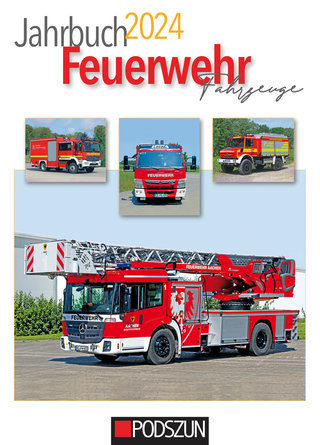
British Bus Garages
A Portrait
Seiten
2021
Amberley Publishing (Verlag)
978-1-3981-0036-7 (ISBN)
Amberley Publishing (Verlag)
978-1-3981-0036-7 (ISBN)
Fascinating unpublished shots of the UK's extensive network of bus depots. Bus garages, or depots if that is your preferred nomenclature, come in all shapes and sizes.
Bus garages, or depots if that is your preferred nomenclature, come in all shapes and sizes and have their origins in the tram depots that were established by the various tramway companies of the pre-electrification era. Tram depots were originally built for horse-drawn and steam-hauled tramcars and, in the case of the former, often had stables attached.
Hardly any two bus garages were the same as they varied in both size and type of construction. Some, such as London Transport’s Stockwell garage (which is still in use) and Salford Corporation’s Frederick Road tram/bus depot, could be considered architectural gems. The capacity of a garage could vary enormously; examples of this were Ribble Motor’s outstation at Bowness-on-Solway with space to garage just one bus and Oldham Corporation’s Wallshaw Street garage, which when built was designed to hold 300 buses under one roof.
There are still a significant number of former tram depots functioning as bus garages, but they are on the decline. The deregulation of bus services in 1986 changed the course of the bus industry forever. As undertakings were privatised and sold off during the 1990s, the new operators moved out of their inherited garages and set up more low-cost establishments. These generally consisted of a moderately sized maintenance building and a large open-air parking area.
Bus garages, or depots if that is your preferred nomenclature, come in all shapes and sizes and have their origins in the tram depots that were established by the various tramway companies of the pre-electrification era. Tram depots were originally built for horse-drawn and steam-hauled tramcars and, in the case of the former, often had stables attached.
Hardly any two bus garages were the same as they varied in both size and type of construction. Some, such as London Transport’s Stockwell garage (which is still in use) and Salford Corporation’s Frederick Road tram/bus depot, could be considered architectural gems. The capacity of a garage could vary enormously; examples of this were Ribble Motor’s outstation at Bowness-on-Solway with space to garage just one bus and Oldham Corporation’s Wallshaw Street garage, which when built was designed to hold 300 buses under one roof.
There are still a significant number of former tram depots functioning as bus garages, but they are on the decline. The deregulation of bus services in 1986 changed the course of the bus industry forever. As undertakings were privatised and sold off during the 1990s, the new operators moved out of their inherited garages and set up more low-cost establishments. These generally consisted of a moderately sized maintenance building and a large open-air parking area.
Mike Rhodes hails from Preston and became interested in both road and rail transport from an early age. He has published several books and has been photographing buses since 1974.
| Erscheinungsdatum | 17.05.2021 |
|---|---|
| Zusatzinfo | 180 Illustrations |
| Verlagsort | Chalford |
| Sprache | englisch |
| Maße | 165 x 234 mm |
| Gewicht | 312 g |
| Themenwelt | Natur / Technik ► Fahrzeuge / Flugzeuge / Schiffe ► Nutzfahrzeuge |
| Technik ► Architektur | |
| ISBN-10 | 1-3981-0036-6 / 1398100366 |
| ISBN-13 | 978-1-3981-0036-7 / 9781398100367 |
| Zustand | Neuware |
| Haben Sie eine Frage zum Produkt? |
Mehr entdecken
aus dem Bereich
aus dem Bereich
100 Dinge, die man mit einem Bulldog oder Trecker erlebt haben muss. …
Buch | Softcover (2024)
Heel (Verlag)
12,99 €


